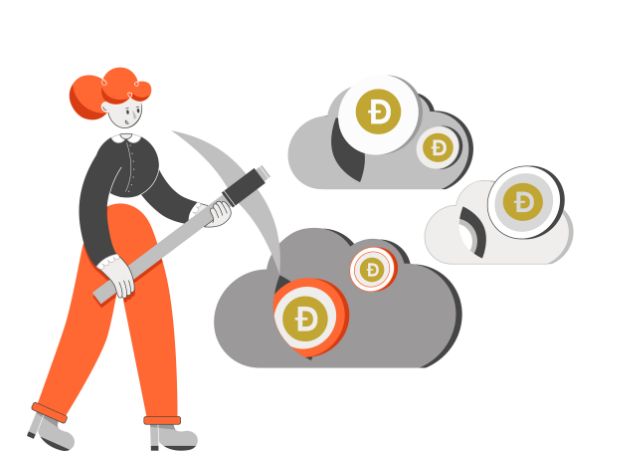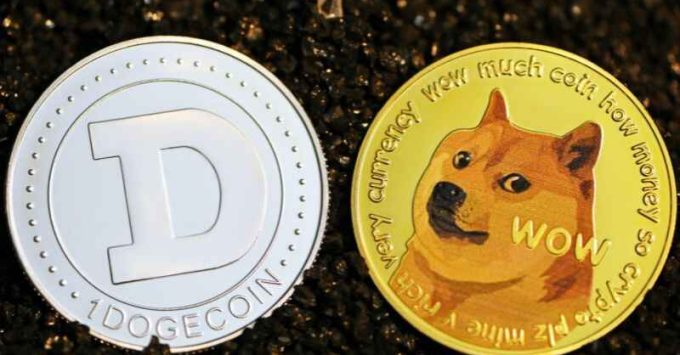Dogecoin is a decentralized and peer-to-peer digital currency that lets users easily send money online without using traditional banking systems. It was introduced in December 2013 and featured the face of the Shiba Inu dog from the Doge meme. Dogecoin was initially created as a joke or parody of other cryptocurrencies but it quickly developed its online community and reached a market capitalization in the billions of dollars. It’s used for various types of online transactions, ranging from buying goods and services to transferring funds between individuals.
Exploring Dogecoin
Dogecoin has the following key aspects:
Scrypt Algorithm
Dogecoin uses the Scrypt algorithm for its proof-of-work consensus mechanism. This makes it different from Bitcoin’s SHA-256 algorithm. Scrypt is generally considered less complex and more accessible to a wider range of miners, allowing for a more decentralized mining community.
Unlimited Supply
Dogecoin does not have a supply limit and miners can continue to mine new Dogecoins indefinitely. The idea behind this is to encourage spending and tipping rather than holding it as a limited asset.
Fast Transaction Times
Dogecoin offers faster transaction times compared to many other cryptocurrencies. The network aims for a block time of 1 minute which is significantly more suitable for smaller, everyday transactions.
Low Transaction Fees
One of Dogecoin’s appealing features is its low transaction fees which makes it ideal for microtransactions and online tipping.
Strong Community Support
The Dogecoin community has shown a strong spirit and has used Doge for several charitable causes and fundraising events. The community often rallies around various social and charitable projects, using Dogecoin to raise funds.
Proper Culture & Branding of Dogecoin
The use of the Shiba Inu dog meme as its mascot has helped Dogecoin gain visibility and popularity beyond the typical cryptocurrency audience. The brand’s wide appeal across various demographics significantly boosts its popularity on social media platforms.

Mining Dogecoin – How It Works?
Mining Dogecoin involves validating transactions and maintaining the Dogecoin blockchain, and it works using a proof-of-work (PoW) mechanism.
When a user makes a Dogecoin transaction, the Doge network displays it and awaits verification. Doge groups these transactions in a pool of unconfirmed transactions. Miners select transactions from this pool to create a new block. Each block contains a list of transactions. The network groups these transactions in a pool of unconfirmed transactions.
Miners must solve a complex cryptographic puzzle to add a block to the blockchain, a process known as proof-of-work. The puzzle requires computational power and is designed to be difficult to solve but easy to verify. The exact nature of the puzzle involves finding a hash value that meets certain criteria which is computationally intensive and random.
The Dogecoin network rewards the first miner who successfully solves the puzzle with coins and validates the block with Dogecoins. This reward serves as an incentive for miners to contribute their computing power to the network.
Once a miner solves the puzzle, the new block is added to the Dogecoin blockchain. The miner then distributes this block throughout the Dogecoin network. Other miners and nodes verify the block and update their copy of the blockchain.
Miners continuously form new transactions and blocks in a cycle, adding them to the blockchain. This maintains the continuity and integrity of the Dogecoin blockchain. Read crytocurrency evolution if you want to know more about altcoins.
Performance Analysis
As of January 2024, Dogecoin (DOGE) has shown a stable performance in the cryptocurrency market. It ranks 10th in global cryptocurrency standings and is trading at around $0.09208. The currency experienced a slight daily decline of 2%, yet this doesn’t significantly impact its overall stable status in the market.
In 2023, Dogecoin’s price fluctuated within a specific range, hitting a low of approximately $0.0500 and reaching a peak at $0.0729. On average, it traded at around $0.0900 which shows its durability during market volatility.
You have not selected any currency to displayChallenges & Difficulties
Dogecoin users face several challenges that are common in the cryptocurrency space. These include:
-
Lack of Regulation
The lack of a central authority managing Dogecoin makes it prone to fraud and market manipulation. This lack of regulation means users must exercise caution when dealing with Dogecoin transactions to avoid scams and theft.
-
Cybersecurity Risks
The growing popularity of cryptocurrencies like Dogecoin makes them targets for hackers. Users need to secure their digital wallets through strong passwords and two-factor authentication to safeguard their investments from cyber criminals.
-
Volatility
Dogecoin exhibits high volatility and the value of Dogecoin fluctuates significantly. To mitigate this risk, diversifying investments and staying informed about market trends is advisable.
-
Limited Acceptance
Dogecoin is not as widely accepted as a form of payment when compared to other major cryptocurrencies. This limited acceptance makes it challenging for users to use Dogecoin for everyday transactions or to convert it into goods and services.
-
Scalability Issues
Dogecoin currently faces scalability challenges which could lead to congestion and delays in transaction confirmations. However, these issues remain a major obstacle to Dogecoin’s adoption as a global payment method.
-
Lack of Smart Contract Functionality
Dogecoin does not support smart contracts which limits its use in decentralized applications. This restricts Dogecoin’s functionality and scalability as a blockchain platform.

